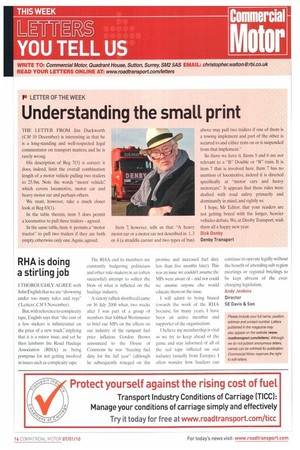P LETTER OF THE WEEK
Page 16

If you've noticed an error in this article please click here to report it so we can fix it.
Understanding the small print
THE LEITER FROM Jim Duckworth (CM 10 December) is interesting in that he is a long-standing and well-respected legal commentator on transport matters, and he is rarely wrong.
His description of Reg 7(5) is correct: it does, indeed, limit the overall combination length of a motor vehicle pulling two trailers to 25.9m. Note the words "motor vehicle'," which covers locomotive, motor car and heavy motor car and perhaps others, We must, however, take a much closer look at Reg 83(1).
In the table therein, item 5 does permit a locomotive to pull three trailers — agreed, In the same table, item 6 permits a "motor tractor" to pull two trailers if they are both empty, otherwise only one. Again, agreed. Item 7, however, tells us that: "A heavy motor car or a motor car not described in 1.3 or 4 (a straddle carrier and two types of bus) above may pull two trailers if one of them is a towing implement and part of the other is secured to and either rests on or is suspended from that implement."
So there we have it. Items 5 and 6 are not relevant to a "B" Double or "B" train. it is item 7 that is involved here. Item 7 has no mention of locomotive, indeed it is directed specifically at "motor cars and heavy motorcars': It appears that these rules were drafted with road safety primarily and dominantly in mind, and rightly so.
I hope, Mr Editor, that your readers are not getting bored with the longer, heavier vehicles debate. We, at Denby Transport, wish them all a happy new year.
Dick Denby
Denby Transport




























































































































